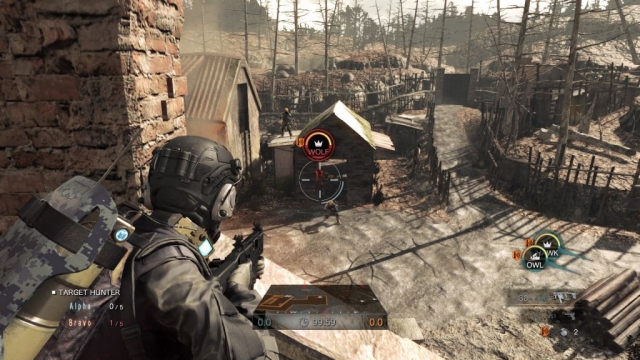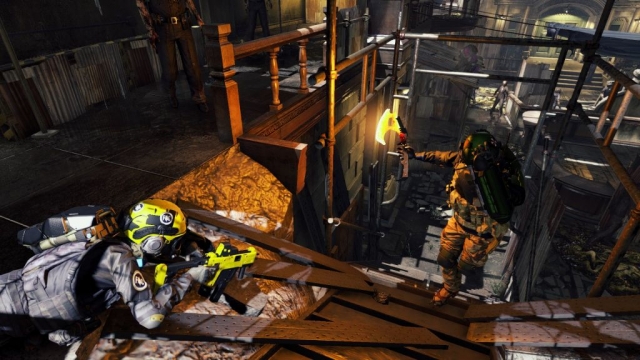Umbrella Corps

A lot of fans of the Resident Evil series aren’t aware of this, but Operation Raccoon City, the infamous 2012 team-based shooter, actually sold quite well. Its reviews were notoriously poor and the word-of-mouth was terrible, but it still moved something like two million copies.
The series’ universe has always seemed like it would lend itself well to some kind of over-the-top action experience, even if it wouldn’t go over well with the franchise’s typical fans. Resident Evil happens to feature a huge number of vivid, iconic monsters, each with wildly different abilities, and something like half a dozen special forces teams that are specifically tasked with hunting them. It’s such a natural fit for a modern tactical shooter that it’s a surprise Capcom waited until 2012 to try and put one out.
Umbrella Corps marks their second attempt thereof, released as a cheap budget title, but like ORC, it really isn’t very good. It has the feel of a very ambitious fan project, or maybe a prototype for an abandoned, unfinished game that they shoved out the door to try to get some return on their investment. The experience is basically incomplete, like it wasn’t thought all the way through.
UC is primarily an online team-based shooter, with the typical modes one might expect, and is designed as a sort of greatest-hits edition of the Resident Evil series to date. There’s a bare-bones single-player campaign, The Experiment, which sets the tone: the player is an anonymous mercenary in one of several equally anonymous organizations that are attempting to salvage useful data and technologies from the sites of various outbreaks. The maps thus range from generic locations, such as an overrun Tricell office building or an underground lab that used to belong to the Umbrella corporation, to specific places like the Ganados’ village from the opening level of Resident Evil 4.
The first and most obvious issue is the player’s weirdly limited view of the screen. In UC, you’re constantly stuck in a behind-the-shoulder view, similar to what other recent RE games use while your weapon is readied, so your field of vision is limited to something like a 135-degree frontal cone. Each map keeps you in close quarters most of the time, enemies constantly respawn all around you (often crawling out of piles of random viscera like the guy rebuilding his body in Hellraiser), and despite being a professional mercenary in full tactical gear, your character takes hits like a glass ballerina. Zombies can kill you in three swings, Ganados can do so even faster, and there’s typically at least one in your massive blind spot at any given time.
This becomes even more obnoxious when you’re up against other players. The online game is a janky team-based shooter with unreliable netcode, and in play, it feels like an HD remaster of an unambitious Counterstrike clone from the sixth generation of consoles. You’re encouraged to take cover, but it’s meaningless, because at any given time two players on the enemy team are gliding soundlessly up behind you with a climbing axe descending towards your skull. There are mechanics in play that ostensibly encourage you to treat slowly-spawning monsters as both a resource and an obstacle, by sending them after enemies or grabbing a zombie as a human shield, but they spawn so slowly and have so little health that they barely qualify as a distraction.
Umbrella Corps is a game of wholly unrealized ideas. The single-player “campaign” is a bunch of repetitive challenges that are boring when they aren’t frustrating, the multiplayer doesn’t really work, and most of its mechanics are at best barely functional at best. It doesn’t feel like it’s finished, and even if it were to be further refined, it would just be a low-budget Gears of War-style shoot-‘em-up. There’s no reason to play it.
Reviewed By: Thomas Wilde
Publisher: Capcom
Rating: 50%
——————————————————————————–
This review is based on a digital copy of Umbrella Corps for the PlayStation 4 provided by Capcom.
 Game Over Online
Game Over Online










